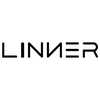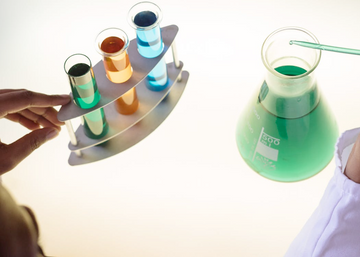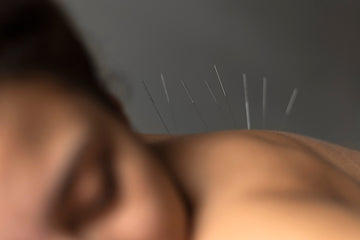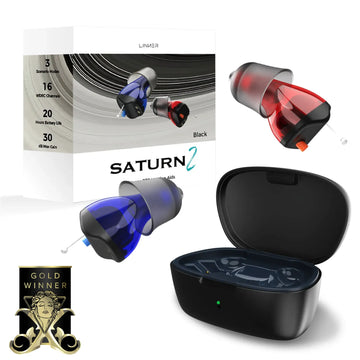Laboratories use pipettes extensively in daily research. Pipettes require disposable tips for proper operation. While tips are simple consumables, they are essential for accurate liquid transfer. Quality tips ensure safety, accuracy, and prevent contamination during complex liquid handling procedures.
Researchers can dispense precise volumes without contamination risk when using the right tips. The right tip reduces waste, improves accuracy, and protects samples from degradation. Pipette tips selection depends on material composition and design requirements.
Using the wrong tip can compromise research results and lead to inaccurate measurements. Quality tips prevent cross-contamination and ensure accurate volume measurement throughout experiments. Understanding these differences helps maintain sterility and achieve reliable outcomes. Laboratories can optimize their consumables while protecting both the environment and staff.
Understanding the main types helps researchers make informed choices for their applications. Knowing these key differences ensures research accuracy and reproducibility. Many studies require high-quality, sterile pipette tips to meet rigorous standards. Choosing the right tip directly affects experimental results and the accuracy of reproducible data.
Types of Pipette Tips – Matching the Tool to the Task
Laboratory research uses various pipettes with key functional differences. Tip selection depends on the work environment and application requirements. Researchers consider types of pipette, contamination risk, and experimental methodology when selecting tips. Understanding types of pipette helps researchers select appropriate tips for their specific needs.
Modern laboratories use various tip types depending on their research needs. Here are the most common options and their applications:
- Standard tips. Standard tips are the most popular type in laboratory research. They are ideal for daily routine tasks and standard solutions. Researchers use them to dispense various reagents and perform dilutions. These tips come in multiple sizes for different applications and pipette volumes.
- Filter tips. Filter tips are among the most crucial tip types for sensitive work. Filtered tips feature a special barrier called an aerosol barrier inside the tip. This barrier prevents cross-contamination of samples and protects the pipette's internal mechanism. Filter tips are essential for molecular biology and diagnostic testing, where sterility is critical.
- Low liquid retention tips. These tips have a specialized surface treatment or modified plastic formulation. This design minimizes liquid retention on internal surfaces. This feature enables more precise and accurate dispensing, especially for expensive reagents.
- Wide-bore tips. Wide-bore tips are commonly used for specific applications requiring larger openings. These tips are ideal for transferring viscous liquids and cell suspensions. They're commonly used in cell culture work requiring precision without shearing forces.
- Extended tips. Extended tips work well with deep tubes and specialized vessels. The extended length reduces the risk of touching vessel walls during pipetting. This design maintains sterility and safety during deep-well liquid handling.
- Specialized tips. Specialized tips are designed for high-throughput screening and automated liquid handlers. These tips offer convenience and maintain high sterility standards. They are engineered for robotic compatibility and consistent performance across automation platforms.
Pipette Tips Material – Understanding the Composition
Pipette tips material is crucial for laboratory research and experimental success. Material choice directly affects experimental results and data reliability. Most tips are made from polypropylene for general laboratory use. High-quality tips feature enhanced chemical resistance and minimal protein-binding properties.
Medical-grade polypropylene is inert to most aqueous solutions and common reagents. It's suitable for routine applications across various studies and disciplines. This material minimizes sample loss during liquid transfer operations. Its transparency also allows for visual monitoring of liquid levels during pipetting.
Autoclaving is a standard daily laboratory practice for sterilization. Polypropylene pipette tips withstand autoclaving without significant deformation or dimensional changes.
Many tips feature specialized surface treatments to improve performance. These treatments reduce liquid adhesion and improve sample release from tip walls. Low-retention tips enhance experimental reproducibility, especially when working with precious samples. High-quality tips are additive-free to avoid interfering with sensitive assays like PCR.
Manufacturers avoid dyes, making tips suitable for molecular biology applications. Pipette tips material quality directly impacts research outcomes and data accuracy. Tips for robotic systems feature conductive carbon coatings for automation compatibility. This coating enables liquid level detection by robotic liquid handling systems.
Researchers select appropriate materials before beginning experimental work. Quality tips minimize both contamination and pipetting errors throughout the workflow.
Sterile Pipette Tips – For Sensitive Applications
Sterile tips are essential tools for sensitive laboratory applications. Sterile tips are required when working with sensitive biological materials. They're essential for maintaining accuracy in contamination-sensitive environments. These tips are sterilized using gamma irradiation to ensure complete sterility.
Sterile pipettes paired with sterile tips provide optimal contamination control. Here are the main applications of sterile tips:
- Molecular biology. In molecular biology, sterile tips prevent cross-contamination between samples. They're essential for PCR, cloning, and sequencing applications where trace contamination matters.
- Cell culture. Sterile tips prevent microbial contamination during cell culture work. They ensure sterility and safety in cell culture applications and tissue engineering.
- Clinical diagnostics. In clinical diagnostics, sterile tips maintain sample integrity during testing. They're required for patient sample testing and diagnostic procedures in healthcare settings.
- Pharmaceutical manufacturing. Sterile pipette tips are standard in pharmaceutical manufacturing environments. They're used to maintain GMP compliance and quality assurance standards.
Sterile tips must meet certification standards before use in critical applications. These tips come individually wrapped or in sealed, tamper-evident racks for protection. Sterile tips cost more due to sterilization processes and specialized packaging requirements. However, they're essential for research requiring contamination control and regulatory compliance.
Sterile tips save time by eliminating the need for in-house sterilization procedures. They minimize contamination risk in critical applications like cell culture and diagnostics. Sterile pipette tips are the gold standard for contamination-sensitive work in modern laboratories. They help meet regulatory requirements and compliance standards in regulated industries.
Sterile vs Non-Sterile Pipette Tips – A Note on Terminology
Laboratories use various instruments depending on application requirements. Instrument selection depends on safety requirements and research methodology. Understanding these differences helps researchers select appropriate products for their work.
The choice between sterile vs non-sterile pipette tips depends on specific applications. Each type serves distinct purposes in the laboratory setting. Understanding your research requirements guides proper selection and cost management. Laboratories can manage costs effectively without compromising quality or safety standards.
Understanding these differences ensures appropriate contamination control. Here are the main characteristics and comparisons:
Sterile tips:
- Pre-sterilized with individual or rack packaging
- Certified as non-toxic and DNase/RNase-free
- Essential for contamination-sensitive applications
- Suitable for aseptic workflows, including PCR and cell culture
- Sterile tips cost more than non-sterile alternatives
- Worth the investment for critical applications requiring assured sterility
- Single-use only; do not re-sterilize
Non-sterile tips:
- Supplied in bulk quantities for cost efficiency
- Not sterilized; unsuitable for contamination-sensitive work
- Suitable for general laboratory work and routine procedures
- Best choice for preparing reagents and working with buffers
- Can be autoclaved if needed for sterility
- Not certified for sterility or nuclease-free status
When selecting pipette tips, consider both material properties and sterility requirements. Selection depends on application requirements, contamination risk, and budget constraints. Researchers select tips based on specific experimental needs and laboratory protocols.
For routine pipetting, non-sterile tips are cost-effective and appropriate. For sensitive applications, sterile tips are required to ensure data integrity.
Autoclave Pipette Tips – When and How to Re-sterilize
Autoclaving is a standard sterilization method in laboratories worldwide. It's used to sterilize reusable equipment and certain consumables. Autoclaving reduces costs while maintaining safety standards for laboratory work. Autoclaving uses high temperature (typically 121°C) and pressure (15 PSI) for sterilization.
Filter tips often cannot be autoclaved due to filter damage from heat exposure. Understanding proper autoclaving procedures is essential for laboratory safety. Here are the best practices for autoclaving:
- Always verify that tips are autoclavable by checking manufacturer specifications. This prevents tip deformation and maintains dimensional accuracy after sterilization cycles.
- Autoclave pipette tips in appropriate containers or autoclavable racks with proper spacing. Ensure adequate spacing for steam circulation throughout the autoclave chamber.
- Avoid overloading, which can result in incomplete sterilization of materials. Proper loading ensures steam penetration and effective sterilization.
- Allow tips to dry completely before use in any laboratory procedures. Residual moisture can lead to contamination and inaccurate dispensing of liquids.
- Repeated autoclaving may degrade tip quality and affect performance over time. Multiple autoclave cycles can compromise dimensional accuracy and material integrity.
Following best practices for autoclaving ensures tip integrity and reliable performance. Some laboratories use dry heat sterilization as an alternative method. However, these methods are generally less effective than autoclaving for complete sterilization.
Autoclaving provides reliable sterilization when performed correctly according to protocols. Laboratories should follow validated sterilization protocols to ensure safety and effectiveness.





![Linner Mercury Clarity OTC Hearing Aids [FSA & HSA Eligible] Linner](http://www.linnerlife.com/cdn/shop/files/Linner-Mercury-Clarity-OTC-Hearing-Aids-_FSA-_-HSA-Eligible_-Linner-110038953.webp?v=1725853434&width=360)

![Linner Mars OTC Hearing Aids [FSA & HSA Eligible] Linner](http://www.linnerlife.com/cdn/shop/files/Linner-Mars-OTC-Hearing-Aids-_FSA-_-HSA-Eligible_-Linner-110039213.webp?v=1725865495&width=360)
